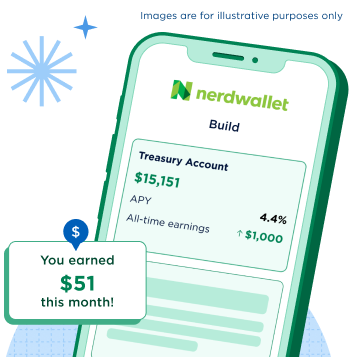Cryptocurrency Basics: Pros, Cons and How It Works
Cryptocurrency (or “crypto”) is a digital currency that can be used to buy goods and services or traded for a profit. Bitcoin is the most widely used cryptocurrency.

Many, or all, of the products featured on this page are from our advertising partners who compensate us when you take certain actions on our website or click to take an action on their website. However, this does not influence our evaluations. Our opinions are our own. Here is a list of our partners and here's how we make money.
The investing information provided on this page is for educational purposes only. NerdWallet, Inc. does not offer advisory or brokerage services, nor does it recommend or advise investors to buy or sell particular stocks, securities or other investments.
What is cryptocurrency?
Cryptocurrency (or “crypto”) is digital currency, such as Bitcoin, that is used as a payment method or investment. Cryptocurrencies are named for the cryptography that lets people use them securely without the need for a government or bank.
Here are a few examples:
- Bitcoin was initially developed as a form of payment that isn't controlled by a central bank. Financial institutions have traditionally been needed to check that a payment went through. But Bitcoin does this automatically, without that central authority.
- Ethereum uses the same underlying technology as Bitcoin. However, it can be used to pay for transactions on the Ethereum blockchain, as well as peer-to-peer payments. This network enables entire financial ecosystems to operate without a central authority. (Think insurance without the insurance company, or real estate titling without the title company.)
- Many altcoins (smaller cryptocurrencies) try to capitalize on other use cases for blockchain tech.
- Meme coins, a subcategory of altcoins, are joke cryptocurrencies that represent internet memes. Some meme coins, such as Dogecoin, have risen to large market caps, despite having no real use cases.
- Stablecoins have been around for years, but recently rose to the fore with the passage of the GENIUS Act. Stablecoin prices aren't meant to fluctuate; they're pegged to assets like the U.S. dollar. They're meant to deliver many of the benefits of crypto without the big, chaotic price swings.
» Get started: Learn now to buy cryptocurrency
Advertisement
Fees $0per trade | Fees 0.2%-2.95% |
Account minimum $0 | Account minimum $1 |
Promotion 2% match (up to $1M), plus a 8.1% APYwhen you open and fund an account with Webull Premium. | Promotion Noneno promotion available at this time |
Why do people invest in cryptocurrencies?
People invest in cryptocurrencies for the same reason anyone invests in anything. They hope its value will rise, netting them a profit.
If demand for Bitcoin grows, for example, the interplay of supply and demand could push up its value. If people began using Bitcoin for payments on a huge scale, demand for Bitcoin would go up. This, in turn, would increase its dollar price. If you'd bought Bitcoin before that increase, you could sell it for more dollars than you bought it for.
The same principles apply to Ethereum. "Ether" is the currency of the Ethereum blockchain. Developers can build decentralized finance (or "DeFi") apps on that network without the need for a financial institution. They must use Ether to build and run apps on Ethereum. In theory, the more that is built on the Ethereum blockchain, the higher the demand for Ether.
However, it's important to note that to some, cryptocurrencies aren't investments at all. Many Bitcoin enthusiasts hail it as a much better currency system than our current one. They'd prefer we spend and accept it as everyday payment. One common refrain — "one Bitcoin is one Bitcoin" — underscores the view that Bitcoin shouldn't be measured in dollars. Rather, it should be measured by the value it brings as a new monetary system.
How does cryptocurrency work?
Cryptocurrencies are based on a technology known as blockchain, a tamper-resistant transaction record. Blockchains solve a problem with past efforts to create digital money: preventing double-spending .
Individual cryptocurrency units are called coins or tokens, depending on how they're used. Some are intended to be units of exchange for goods and services. Others are stores of value. Some can be used in specific programs such as games and financial products.
» Storing crypto? These are the top crypto wallets
How are cryptocurrencies created?
One way cryptocurrencies are made is through a process known as mining, which is used by Bitcoin. Bitcoin mining is an energy-intensive process where computers solve puzzles to validate payments. As a reward, the owners of those computers can receive newly created cryptocurrency. Other cryptocurrencies use different methods, such as proof of stake, to create tokens. Many have a significantly lighter environmental impact.
For most people, the easiest way to get cryptocurrency is to buy it, either from an exchange or another user.
Why are there so many kinds of cryptocurrency?
It’s important to remember that Bitcoin is different from cryptocurrency in general. Bitcoin is the oldest and most valuable cryptocurrency, but the market is large. There are thousands of cryptocurrencies today. Some coins have valuations in the trillions of dollars. Others, however, are obscure and almost worthless.
If you want to get into crypto, consider starting with a well-established one. These coins typically have the largest market capitalizations.
» Related: 7 current and upcoming spot Solana ETFs
But thoughtfully selecting your cryptocurrency is no guarantee of success in such a volatile space. Sometimes, an issue in the deeply interconnected crypto industry can spill out and have broad effects on prices. When crypto exchange FTX collapsed in November 2022, the price of Bitcoin fell more than 20% over the next two months.
Are cryptocurrencies financial securities, like stocks?
Whether or not cryptocurrency is a security has historically been a contentious question. To back up a little, generally, a "security" in finance is anything that represents a value and can be traded. Stocks are securities because they represent ownership in a public company. Bonds are securities because they represent a debt owed to the bondholder. And both of these securities can be traded on public markets.
Recently, however, regulators have leaned toward classifying major cryptocurrencies like Bitcoin and Ethereum as commodities — standardized products with interchangeable units that can be bought and sold on a variety of different exchanges and can be priced in a variety of different currencies. Commodities are generally more loosely regulated investments than securities.

Pros and cons of cryptocurrency
Cryptocurrency inspires passionate opinions across the spectrum of investors. Some people believe it is a transformational technology, while others worry it's a fad. Here are a few reasons why:
Cryptocurrency pros
- Cryptocurrency is a volatile investment. But in the long term, many coins have risen in value considerably. Bitcoin's price has increased roughly tenfold over the last five years, despite several bull and bear markets over that time. It topped $100,000 for the first time in December 2024. Though it fell significantly in the following months, it again surpassed the six-figure level again on May 8, 2025. By July, it had hit yet another all-time high of $120,000.
- Some supporters like that cryptocurrency removes central banks from managing the money supply. Over time, these banks tend to reduce the value of money via inflation.
- Some people in communities that have been underserved by the traditional financial system see crypto as a foothold. Pew Research Center data from 2021 found that Asian, Black and Hispanic people "are more likely than White adults to say they have ever invested in, traded or used a cryptocurrency ."
- Other advocates like the blockchain technology behind cryptocurrencies, because it’s a decentralized processing and recording system and can be more secure than traditional payment systems. It may also provide a cheaper way to send money internationally. Many traditional money transfer services charge substantial fees.
- Some cryptocurrencies offer their owners the opportunity to earn passive income through a process called staking. Crypto staking involves using your cryptocurrencies to help verify transactions on a blockchain protocol. Though staking has its risks, it can allow you to grow your crypto holdings without buying more.
Cryptocurrency cons
- Many cryptocurrency projects are untested, and blockchain technology in general has yet to gain wide adoption. If the underlying idea behind cryptocurrency does not reach its potential, long-term investors may never see the returns they hoped for.
- For shorter-term crypto investors, there are other risks. Its prices tend to change rapidly, and while that means that many people have made money quickly by buying in at the right time, many others have lost money by doing so just before a crypto crash.
- Those wild shifts in value may also cut against the basic ideas behind the projects that cryptocurrencies were created to support. For example, people may be less likely to use Bitcoin as a payment system if they are not sure what it will be worth the next day.
- The environmental impact of Bitcoin and other projects that use similar mining protocols is significant. A comparison by the University of Cambridge, for instance, said worldwide Bitcoin mining consumes more than twice as much power as all U.S. residential lighting . Some cryptocurrencies use different technology that demands less energy.
- Governments around the world have not yet fully reckoned with how to handle cryptocurrency, so regulatory changes and crackdowns have the potential to affect the market in unpredictable ways.
- Many cryptocurrency networks charge a fee for any transaction, including buying or selling crypto as an investor. These can vary wildly, and high fees can cut into returns. Bitcoin transaction fees, for example, have varied between less than 50 cents and more than $100 per transaction over the last year, during periods of exceptionally low or high transaction activity.
AD
Earn 3.66% APY by investing in U.S. Treasury Bills*
Maximize your cash by investing in low-risk, government-backed T-Bills. All the work is done for you — just make the deposit and watch your money grow.
*Rate when held to maturity. Rate shown is subject to price fluctuations.

Cryptocurrency legal and tax issues
There’s no question that cryptocurrencies are legal in the U.S. Ultimately whether they’re legal worldwide depends on each individual country.
The question of whether cryptocurrencies are legally allowed, however, is only one part of the legal question. Other things to consider include how crypto is taxed and what you can buy with cryptocurrency.
- Legal tender: You might call them cryptocurrencies, but they differ from traditional currencies in one important way: there's no requirement in most places that they be accepted as "legal tender." The U.S. dollar, by contrast, must be accepted for "all debts, public and private." Countries around the world are taking various approaches to cryptocurrency. Only one country, El Salvador, has ever accepted Bitcoin as legal tender, but even El Salvador reversed this decision in 2025. In the U.S., what you can buy with cryptocurrency depends on the preferences of the seller.
- Crypto taxes: Again, the term "currency" is a bit of a red herring when it comes to taxes in the U.S. Cryptocurrencies are taxed as property, rather than currency. That means that when you sell them, you'll pay tax on the capital gains, or the difference between the price of the purchase and sale. And if you're given crypto as payment — or as a reward for an activity such as mining — you'll be taxed on the value at the time you received them.
» Learn more: Understanding crypto and taxes
Your decision: Is cryptocurrency a good investment?
Cryptocurrency is a relatively risky investment, no matter which way you slice it. Generally speaking, high-risk investments should make up a small part of your overall portfolio — one common guideline is no more than 10%. You may want to look first to shore up your retirement savings, pay off debt or invest in less-volatile funds made up of stocks and bonds.
There are other ways to manage risk within your crypto portfolio, such as by diversifying the range of cryptocurrencies that you buy. Crypto assets may rise and fall at different rates, and over different time periods, so by investing in several different products you can insulate yourself — to some degree — from losses in one of your holdings.
Perhaps the most important thing when investing in anything is to do your homework. This is particularly important when it comes to cryptocurrencies, which are often linked to a specific technological product that is being developed or rolled out. When you buy a stock, it is linked to a company that is subject to well-defined financial reporting requirements, which can give you a sense of its prospects.
With cryptocurrencies, on the other hand, discerning which projects are viable can be more challenging. If you have a financial advisor who is familiar with cryptocurrency, it may be worth asking for input.
For beginning investors, it can also be worthwhile to examine how widely a cryptocurrency is being used. Most reputable crypto projects have publicly available metrics showing data such as how many transactions are being carried out on their platforms. If use of a cryptocurrency is growing, that may be a sign that it is establishing itself in the market. Cryptocurrencies also generally make "white papers" available to explain how they'll work and how they intend to distribute tokens.
If you're looking to invest in less established crypto products, here are some additional questions to consider:
- Who’s heading the project? An identifiable and well-known leader is a positive sign.
- Are there other major investors who are investing in it? It’s a good sign if other well-known investors want a piece of the currency.
- Will you own a portion in the company or just currency or tokens? This distinction is important. Being a part owner means you get to participate in its earnings (you’re an owner), while buying tokens simply means you're entitled to use them, like chips in a casino.
- Is the currency already developed, or is the company looking to raise money to develop it? The further along the product, the less risky it is.
It can take a lot of work to comb through a prospectus; the more detail it has, the better your chances it’s legitimate. But even legitimacy doesn’t mean the currency will succeed. That’s an entirely separate question, and that requires a lot of market savvy. Be sure to consider how to protect yourself from fraudsters who see cryptocurrencies as an opportunity to bilk investors.
Frequently Asked Questions
How does a blockchain work?
Most cryptocurrencies are based on blockchain technology, a networking protocol through which computers can work together to keep a shared, tamper-proof record of transactions. The challenge in a blockchain network is in making sure that all participants can agree on the correct copy of the historical ledger. Without a recognized way to validate transactions, it would be difficult for people to trust that their holdings are secure. There are several ways of reaching "consensus" on a blockchain network, but the two that are most widely used are known as "proof of work" and "proof of stake.”
What does proof of work mean?
Proof of work is one way of incentivizing users to help maintain an accurate historical record of who owns what on a blockchain network. Bitcoin uses proof of work, which makes this method an important part of the crypto conversation. Blockchains rely on users to collate and submit blocks of recent transactions for inclusion in the ledger, and Bitcoin's protocol rewards them for doing so successfully. This process is known as mining.
There is stiff competition for these rewards, so many users try to submit blocks, but only one can be selected for each new block of transactions. To decide who gets the reward, Bitcoin requires users to solve a difficult puzzle, which uses a huge amount of energy and computing power. The completion of this puzzle is the "work" in proof of work.
For lucky miners, the Bitcoin rewards are more than enough to offset the costs involved. But the huge upfront cost is also a way to discourage dishonest players. If you win the right to create a block, it might not be worth the risk of tampering with the records and having your submission thrown out — forfeiting the reward. In this instance, spending the money on energy costs in an attempt to tamper with the historical record would have resulted in significant loss.
Ultimately, the goal of proof of work is to make it more rewarding to play by the rules than to try to break them.
» Learn more: How does Bitcoin work?
What is proof of stake?
Proof of stake is another way of achieving consensus about the accuracy of the historical record of transactions on a blockchain. It eschews mining in favor of a process known as staking, in which people put some of their own cryptocurrency holdings at stake to vouch for the accuracy of their work in validating new transactions. Some of the cryptocurrencies that use proof of stake include Cardano, Solana and Ethereum (which is in the process of converting from proof of work).
Proof of stake systems have some similarities to proof of work protocols, in that they rely on users to collect and submit new transactions. But they have a different way of incentivizing honest behavior among those who participate in that process. Essentially, people who propose new blocks of information to be added to the record must put some cryptocurrency at stake. In many cases, your chances of landing a new block (and the associated rewards) go up as you put more at stake. People who submit inaccurate data can lose some of the money they've put at risk.
How do you mine cryptocurrency?
Mining cryptocurrency is generally only possible for a proof-of-stake cryptocurrency such as Bitcoin. And before you get too far, it is worth noting that the barriers to entry can be high and the probability of success relatively low without major investment.
While early Bitcoin users were able to mine the cryptocurrency using regular computers, the task has gotten more difficult as the network has grown. Now, most miners use special computers whose sole job is to run the complex calculations involved in mining all day every day. And even one of these computers isn't going to guarantee you success. Many miners use entire warehouses full of mining equipment in their quest to collect rewards.
If you don’t have the resources to compete with the heavy hitters, one option is joining a mining pool, where users share rewards. This reduces the size of the reward you'd get for a successful block, but increases the chance that you could at least get some return on your investment.
How do you pull your money out of crypto?
Just like with buying cryptocurrencies, there are several options for converting your crypto holdings into cash. While decentralized exchanges and peer-to-peer transactions may be right for some investors, many choose to use centralized services to offload their holdings.
With a centralized exchange, the process is basically the reverse of buying. But one advantage if you own crypto is that you probably already have everything set up. Here are the steps:
- Connect the wallet that holds the cryptocurrencies that you want to sell, and make sure the exchange you’ve chosen supports both that wallet and the asset in question.
- Move your cryptocurrency onto the exchange.
- Sell your cryptocurrency.
- Transfer the proceeds back to your bank account.
Every exchange will handle such transactions differently, so you’ll want to look up the fees and processes for your specific provider. Also, remember that you may be creating crypto tax liability when you sell your digital assets.
What's the deal with the Strategic Bitcoin Reserve?
In March 2025, President Donald Trump signed an executive order announcing that the U.S. would create a "Strategic Bitcoin Reserve," a government stockpile made up of Bitcoin that the government has seized over time through law enforcement actions. The executive order also announced a "U.S. Digital Asset Stockpile," a reserve of other cryptocurrencies.
The order directs the Secretary of the Treasury to evaluate considerations for creating these cryptocurrency stockpiles within 60 days and propose legislation to create them. At the time of last update, no such legislation has been signed into law yet.
Article sources
NerdWallet writers are subject matter authorities who use primary,
trustworthy sources to inform their work, including peer-reviewed
studies, government websites, academic research and interviews with
industry experts. All content is fact-checked for accuracy, timeliness
and relevance. You can learn more about NerdWallet's high
standards for journalism by reading our
editorial guidelines.
- 1. National Institute of Standards and Technology. Double Spend (Problem). Accessed Jun 15, 2022.
- 2. Pew Research Center. 16% of Americans Say They Have Ever Invested in, Traded or Used Cryptocurrency. Accessed Apr 19, 2022.
- 3. Cambridge Centre for Alternative Finance. Cambridge Bitcoin Electricity Consumption Index - Comparisons. Accessed Jun 15, 2022.
On this page
- What is cryptocurrency?
- Why do people invest in cryptocurrencies?
- How does cryptocurrency work?
- How are cryptocurrencies created?
- Why are there so many kinds of cryptocurrency?
- Are cryptocurrencies financial securities, like stocks?
- Pros and cons of cryptocurrency
- Cryptocurrency legal and tax issues
- Your decision: Is cryptocurrency a good investment?
More like this
Related articles











